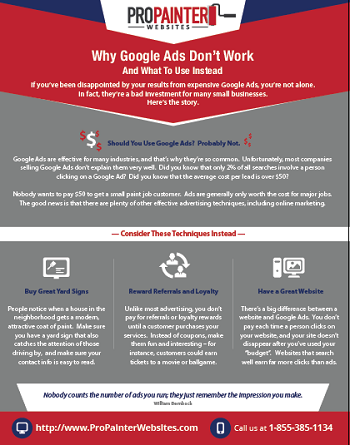Seasonal Considerations For Industrial Exterior Painting: What You Need To Know
Seasonal Considerations For Industrial Exterior Painting: What You Need To Know
Blog Article
Content By-Doherty Chaney
When you're preparing an industrial outside paint job, seasonal aspects can make or break your outcomes. You'll want to take into consideration exactly how temperature level and humidity effect paint application and drying out times. Choosing the right period can guarantee your paint sticks properly and lasts longer. But which seasons are absolutely the best for this type of job? Let's explore the key elements that can influence your job's success.
The Effect of Temperature on Paint Application
When you're planning an industrial external painting project, the temperature can considerably impact how well the paint adheres and dries.
Preferably, you want to paint when temperature levels range between 50 ° F and 85 ° F. If it's too cold, the paint might not heal correctly, leading to concerns like peeling off or splitting.
On the flip side, if it's too warm, the paint can dry too rapidly, preventing proper attachment and resulting in an unequal finish.
You need to likewise consider the time of day; morning or late afternoon supplies cooler temperatures, which can be extra desirable.
Always examine the producer's suggestions for the certain paint you're utilizing, as they frequently offer advice on the ideal temperature level range for optimum outcomes.
Humidity and Its Effect on Drying Times
Temperature isn't the only environmental element that influences your industrial external painting task; humidity plays a significant function as well. High humidity degrees can reduce drying out times drastically, influencing the overall high quality of your paint task.
When the air is saturated with moisture, the paint takes longer to heal, which can bring about issues like bad bond and a higher risk of mold growth. If you're painting on a particularly humid day, be planned for extended delay times in between coats.
It's crucial to keep an eye on local weather conditions and strategy as necessary. Ideally, go for humidity degrees in between 40% and 70% for optimum drying out.
Keeping these factors in mind guarantees your task stays on track and delivers a lasting coating.
Best Seasons for Commercial Exterior Paint Projects
What's the most effective season for your industrial external paint tasks?
lasting impressions painting contractors and early fall are usually your best choices. During these periods, temperature levels are mild, and humidity levels are often reduced, creating perfect conditions for paint application and drying out.
Stay clear of summertime's intense heat, which can cause paint to dry also rapidly, leading to poor adhesion and surface. In a similar way, winter months's cold temperatures can impede appropriate drying and treating, risking the longevity of your paint work.
cabinet painting tulsa for days with temperatures between 50 ° F and 85 ° F for ideal outcomes. Remember to check the neighborhood weather forecast for rain, as damp conditions can spoil your task.
Preparation around these aspects ensures your painting job runs efficiently and lasts longer.
Conclusion
Finally, planning your industrial exterior paint projects around seasonal considerations can make a significant difference in the outcome. By scheduling work during the optimal temperatures and humidity levels, you'll make sure far better adhesion and drying out times. Remember to watch on local weather forecasts and choose the right time of year-- spring and early loss are your best choices. Taking these actions will assist you accomplish a resilient and specialist coating that lasts.
